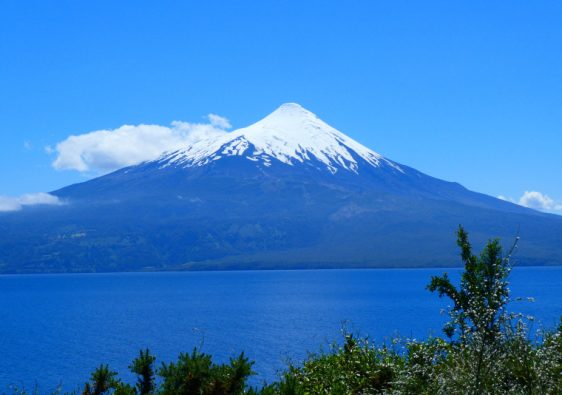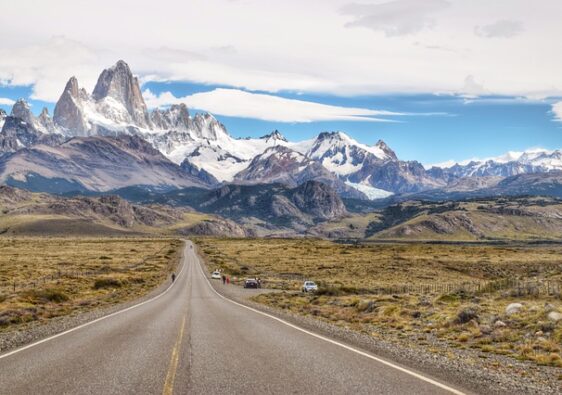With its small and flat territory, Uruguay isn’t a renown hiking destination. Visitors to the country –if they visit at all– usually have a look at Montevideo and call it a day. But you, you are different, and we appreciate that. You want to dig deeper and discover the natural beauty of this underestimated nation. So let’s explore together some of the best trekking options in Uruguay!
This list of Uruguay hikes contains affiliate links. We’re not selling anything ourselves – we just help products and services we find great. If you click one of them and decide to purchase, it’ll be at no extra cost to you; and we’ll get a trifle that’ll help us bring you more awesome travel guides.
From Valizas to Cabo Polonio

Cabo Polonio is a piece of untouched heaven adorning the coast of the Atlantic Ocean. The peculiarity of this peaceful fishing hamlet is that it’s separated from the world by sand dunes, without any road to connect it. Although it’s a popular destination, the locals certainly wish to preserve their unique situation.
Buses leave Montevideo twice a day for the village of Barra de Valizas. From there, it’s possible to hire a 4×4 taxi to reach your destination. Although that’s fun, you’d be missing on the beauty of the dunes, the jewel of the Cabo Polonio National Park.
Crossing the dunes along the shore, you’ll gain enough elevation to admire the coast up to Brazil, the colonies of sea lions, the lighthouse of Cabo Polonio, and the island of Castillos in the distance. Further on, you’ll be able to cross a small river by foot at low tide; otherwise, it’ll be necessary to take a boat.
➔ Follow this trail on Wikiloc.
| Distance (time): | 10.6 km / 6.6 mi (3 hours) |
| Difficulty: | easy to moderate ★★☆☆☆ |
| Closest town: | Cabo Polonio |
| Find accommodation in Cabo Polonio | |
| Best time to go: | All year round |
| Self-guided option? | Yes, or book a tour on Viator |
Santa Teresa National Park

The Parque Nacional de Santa Teresa is one of the 16 national parks scattered around Uruguay’s small territory. It preserves a fragment of the Atlantic coast, with its beaches, sand dunes and forests, only 40 min away from the Brazilian border.
Several short paths criss-cross this small park between the road and the coast, allowing a relaxing family day hike. For a comprehensive exploration, follow the Alua path, which crosses the ficus forest to a couple of viewpoints and some secluded beaches. A visit of the Santa Teresa fortress is also a must.
Don’t get fooled by the appelation of “cerros” (mountains) – nothing exceeds 100 m (330 ft) around here. Still, their “summits” offer nice views on the coastline, one of the world’s largest palm groves, and the Laguna Negra. Between August and November, you may be able to spot dolphins and whales (in the ocean, not in the lake).
➔ Follow this trail on Wikiloc.
| Distance (time): | 12 km (7.5 mi) round-trip (4 hours) |
| Difficulty: | moderate ★★★☆☆ |
| Closest town: | Punta del Diablo |
| Find accommodation in Punta del Diablo | |
| Best time to go: | September–February |
| Self-guided option? | Yes, or book a tour locally |
Laguna Merín
This idyllic stroll follows the shore of a beautiful lake, which irrigates several rice plantations all around. The lake is beloved by many species of migratory birds, but also turtles, capybaras and ostriches. We recommend that you walk slowly, and without making much noise, in order to spot the wildlife.
This hike can be done within a day. But if you fall in love with the area, you’ll find several camping options; our favourite is Punta Muniz, a ribbon of land advancing romantically into the water. A wonderful place to bath, relax on the sandy beach, and observe the birds and the soft passing of time.
This trail is flat and quite easy for most of its length. But in some parts, it disappears in the water and you might need to swim for a few meters. It’s a biathlon of sorts. At the end of the path, awaits the Uruguay-Brazil border – time to turn towards the town of Río Branco.
➔ Follow this trail on Wikiloc.
| Distance (time): | 16 km / 10 mi one way (6 hours) |
| Difficulty: | moderate to challenging ★★★★☆ |
| Closest town: | Río Branco |
| Find accommodation in Lago Merin | |
| Best time to go: | September–February |
| Self-guided option? | Yes, or book a tour locally |
Cerro Arequita

Uruguay doesn’t offer much in terms of mountains. It’s certainly not the place where you’ll practice your climbing skills. But if you’re dying to gain some elevation, head over to Mount Arequita, a 2-hour drive from Montevideo. It provides a short and nice hike to its flat top, at 305 m (1000 ft).
Despite the disappointing altitude, this area offers a mesmerising landscape, made of massive ombú trees and timeless caves. Beneath you, the fields and the woods of Uruguay offer a calming sight.
After the summit, this trails carries on down to the mellow Santa Lucía river. It’s a really soft hike, where you can take the time to enjoy the hike. You’ll then finish the loop on village roads, back to your starting point – an opportunity to hitchhike and meet locals.
➔ Follow this trail on Wikiloc.
| Distance (time): | 7.7 km (4.8 mi) round-trip (2.5 hours) |
| Difficulty: | easy ★☆☆☆☆ |
| Closest town: | Minas |
| Find accommodation in Minas | |
| Best time to go: | October–May |
| Self-guided option? | Yes, or book a hiking tour locally |
Read about our favourite things to do and see in Montevideo.
If you want to tackle a proper mountain (*ahem*), try your hiking boots on Mount Aguiar, located in the Maldonado department. An 11 km (7 mi) trail brings you to the summit at 468 m (1538 ft) and follows onward to three more natural wonders: the impressive Palmas Ravine, the beautiful Venado Waterfall, and the Darwin Canyon.
Like often on Uruguay unfortunately, this natural reserve is a private property. You will therefore need to contact the owner in advance and register on arrival. If you’re interested, have a look at the trail on Wikiloc.
Quebrada de los Cuervos Nature Preserve
The Yerbal Chico river has beautifully shaped the “Crows’ Canyon”, a stunning gorge with cliffs up to 120 meters. This hilly landscape is particularly green, and blessed with amazing fauna and flora – including, obviously, several species of… vultures, which apparently look like crows.
The uneven terrain isn’t particularly difficult and will bring you first down to the river (where it’s possible to swim by warm weather), and then up to the top of another hill. It feels like a different world, which gives a feeling of remoteness that’s uncommon on Uruguay hiking trails.
Note that there’s a small fee to get in. But you can then spend the whole day in the park, marvelling at such an adventure land, wild and yet so close from civilisation, a mere 5-hour drive from the streets of Montevideo.
➔ Follow this trail on Wikiloc.
| Distance (time): | 6.5 km (4 mi) round-trip (3 hours) |
| Difficulty: | moderate to challenging ★★★★☆ |
| Closest town: | Treinta y Tres |
| Find accommodation in Treinta y Tres | |
| Best time to go: | September–November |
| Self-guided option? | Yes, or book a tour locally |
Los helechos Trail (Valle del Lunarejo Natural Park)

Far in the north, close to the Brazilian border, lies this 30,000 ha protected area, set around the Lunarejo Valley. This landscape of gentle streams, grassy hills and deep gorges is probably one of the best trekking destinations in Uruguay.
Among the different hiking options within the park, we recommend following the Helechos trail. Walking down to the river bed, you’ll pass interesting rock formations, like the Bats’ Cave. The finishing line is at a natural pool created by a short fall of the Lunarejo river. Don’t forget your swimsuit!
The trail isn’t very difficult, but it’s not well signposted; plus, the park’s remoteness means you won’t meet many people. It might therefore be a good idea to hire a guide. They’ll be able to organise for you the crossing of private fields, in order to show you even more hidden gems.
➔ Follow this trail on Wikiloc.
| Distance (time): | 10 km (6.2 mi) round-trip (3 hours) |
| Difficulty: | moderate ★★★☆☆ |
| Closest towns: | Masoller, Tranqueras |
| Find accommodation in Lunarejo | |
| Best time to go: | January–May |
| Self-guided option? | Yes, or book a tour locally |
South of the Lunarejo Valley lies another protected area: Cuchilla Laureles. Similar in its geography (hills, canyons, streams, waterfalls), it’s more remote and the access is therefore more difficult.
The main advantage of this extension is that it gives the opportunity for a 2-day challenging hike that will please the most hardcore hikers among us. It’s best to do this trek with a guide, but here’s the Wikiloc entry to give you an idea.
★
Which of these hikes in Uruguay attract you the most?
Tell us in the comments section below!



